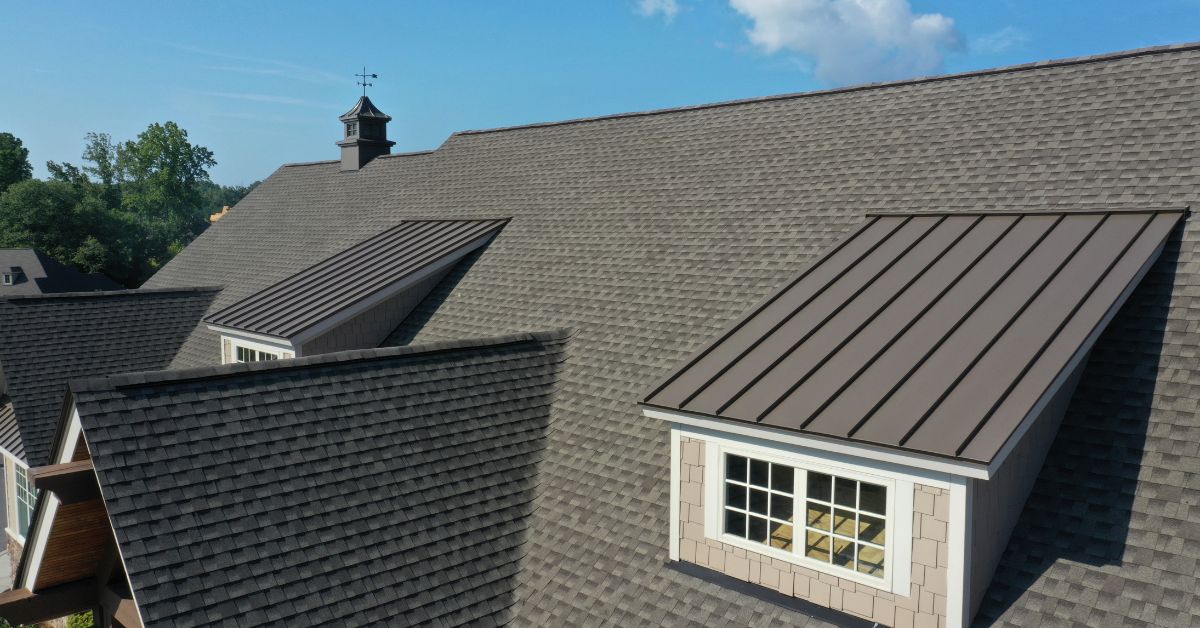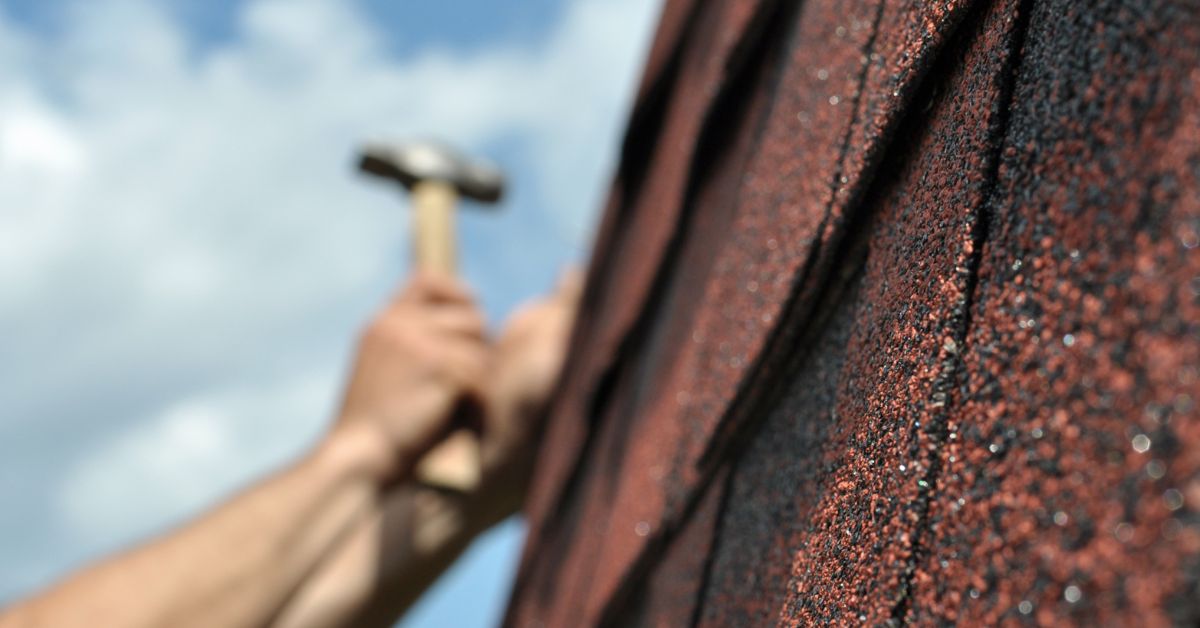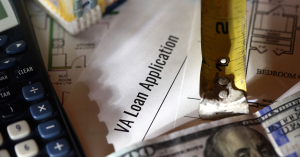Homeownership can often feel like an uphill battle. As an eligible veteran or service member, you may have heard about the Veterans Affairs (VA) home loan and its many benefits. But have you ever explored the nitty-gritty of the VA loan minimum property requirements (MPRs)?
It’s about more than just securing the loan. It’s about knowing that the home you’re investing in provides safety, security, and stability. The MPRs are a crucial aspect beyond the financial figures, defining the quality and condition of the property you aim to acquire. With a deep understanding of the subject, let’s demystify these requirements, guiding you toward a purchase that represents the epitome of home- the ultimate retreat where you truly feel safe and sound.
VA Loan Benefits
A VA loan is a unique mortgage backed by the Department of Veterans Affairs. It’s a great option for eligible service members, veterans, and surviving spouses. It offers several benefits, including:
- No down payments
- Competitive interest rates
- No private mortgage insurance (PMI)
It’s a versatile loan with many potentials, whether buying, building, or refinancing a home.
VA Home Loan and VA Minimum Property Requirements
Within a VA home loan context, minimum property requirements are standards set by VA for defining suitable housing that a home must have to qualify for financing under the VA loan program.
Notably, the specifics of a purely residential and mixed-use property could differ. In this case, familiarizing yourself with the VA loans for mixed-use property guidelines can help you understand these differences better.
Under mixed-use property, zoning allows commercial and residential use and meets the habitability requirement to qualify for a loan.
Breakdown of Requirements for a VA Loan MPRs

Securing a VA loan involves a structured process including:
- Obtaining a certificate of eligibility
- Appraisal
- Underwriting
- Closing the loan process
However, VA outlines specific MPRs a property must meet to qualify for a VA-backed loan. Here are the requirements:
Residential Property Specifics
The property purchased using a VA loan should primarily be a residential one. It should have sufficient living space and be free of health and safety hazards. The VA home inspection checklist provides an extensive view of these specifics, including functioning heating, ventilation, air conditioning (HVAC) system and other structural elements. Remember, the VA application process might vary depending on the property type. For example, if you’re interested in using a VA loan to buy a duplex, you must meet VA occupancy requirements for multi-family homes and loan limits.
Lead-Based Paint Restrictions
One key aspect of VA requirements is the strict restrictions against lead-based paint in homes. Lead-based paint exposure can pose significant health risks for children and pregnant women. A home built before 1978 may contain lead-based paint, which must be examined and addressed during the appraisal process.
Crawl Space Requirements
The VA has set specific requirements around the home’s crawl space, ensuring it is clean, ventilated, and free from damage. Potential issues related to water supply, pests, sewage systems, or mold in the crawl spaces can be deal-breakers.
Roof Requirements
The VA roof requirements also provide further guidelines on the structural integrity of a VA approved home. The roof must be in good shape, sturdy, and provide reasonable future utility. Leaky roofs aren’t approved under VA loans unless properly repaired and re-inspected.
Safety Measures and Accessibility
The property should be accessible via a private or public street. It should have safe and easy access and egress, and there should not be any hazardous high-voltage power lines or heavy-traffic railroad crossing within the property’s immediate vicinity.
Mechanical Systems
The property should operate with safe and functional mechanical systems. This includes heating – the house must hold a heat source and keep a temperature of at least 50 degrees Fahrenheit to prevent the plumbing from freezing. Besides, electrical and plumbing systems should be safe, adequately installed, and have a reasonable future utility.
Encroachments
One of the VA guidelines stipulates that the property should be free from encroachments. An encroachment can occur when a structure or physical object lies partly or entirely within a property boundary. For example, if a garage or part of a home extends into a neighboring property, it’s considered an encroachment. Alternatively, encroachments could also relate to easements. If an easement allows others to use part of the property, it must not interfere with or limit the ability of a home buyer to use and enjoy the property.
Zoning
All properties financed with VA loans must be correctly zoned for residential use. If a property is not properly zoned, it may not be eligible for a loan. If it’s zoned for residential and non-residential use, it may be eligible as long as the non-residential use doesn’t impair the residential use of the property and the property conforms to the area’s residential character.
Termites and Pests Free
The property must be free from wood-destroying insects and other pests. An inspection is required in an area with a high infestation probability. If an inspection report reveals active infestation, treatment and repairs must occur. This requirement is particularly significant as damage caused by pests can lead to expensive repairs, undermine the property’s safety and integrity, and cause structural damage.
Other Safety and Hazard concerns
The property must be free from hazards that can compromise the health and safety of occupants. Here is what appraisers look for:
- Easy entry and exit
- Proper sanitation
- Access to clean drinking water
- Working utilities.
VA Appraisal Purpose in Property Evaluation

A VA appraisal helps to estimate the home’s market value and inspect the property to ensure it satisfies the VA requirements. It’s a vital part of the loan process, determining whether the price you plan to pay aligns with the property’s value while ensuring the home adheres to all requirements.
While often mistaken to be the same, a VA appraisal and home inspection are worlds apart. Here’s a table that shows the difference:
| Criterion | Home Appraisal | Home Inspection |
|---|---|---|
| Purpose | Determines the fair market value of the property | Detailed examination of the home |
| Performed by | A state-certified professional appraiser | A qualified home inspector or a licensed contractor |
| Required by | VA requires an appraisal for all homes purchased with a VA loan | Although the VA does not require a home inspection, it is highly recommended |
| Focuses on | The property’s overall condition, safety, soundness, and sanitation | Home’s systems conditions and structures- electrical, plumbing, HVAC |
| Result Impact | Could directly impact loan approval and loan amount | It helps you make an informed decision but does not directly affect the loan approval |
Unlike a home inspection, the outcome of a VA appraisal can significantly impact your mortgage conditions.
Here’s how it can impact the mortgage:
- It can influence the borrowing amount and reveal if any repairs or improvements should be made.
- A VA appraiser can flag potential future issues, like an aged roof or an old HVAC system, even if they function correctly during appraisal.
If you’re considering using a VA loan for a barndominium, it’s essential to know that these structures can fetch different appraisal values and may have unique MPRs. That’s because they are uncommon, which causes challenges when appraising them to find good recent comparable home sales.
Common Issues with Minimum Property Requirements
VA Home loan MPRs can affect a property’s eligibility for a loan. These requirements ensure the property’s safety, structural integrity, and sanitation. Here are some key problems that may occur in trying to meet these guidelines:
As-Is Properties
Properties sold “as-is” often present challenges when meeting the VA requirements. Selling a property “as-is” signifies a seller’s unwillingness to make repairs before the sale. This can be problematic as homes sold in such a condition usually have issues requiring attention. If these issues interfere with the MPRs, buyers may find it challenging to secure a loan unless they make the necessary repairs out of pocket or negotiate with the seller to undertake specific repairs.
Foundation Issues
Foundation problems can be a significant roadblock for VA loan approval, as they can seriously jeopardize a home’s structural integrity. Indications of potential foundation problems include:
- Uneven floors
- Cracked walls and doors
- Windows that do not close properly
Addressing such issues can be expensive, and sellers must often correct these problems before the final sale.
HVAC Issues
An adequately functioning HVAC system is a crucial element of the MPRs. The VA requires a property to have a heat source, and if the home’s HVAC system is old or malfunctioning, it might not pass the VA appraisal. Buyers and homeowners often face the dilemma of repair versus replacement, implying a decisive factor in whether the home will qualify for the VA loan.
Roof Issues
Roof problems range from minor leaks to complete failure that requires full replacement. A good roof is critical to home preservation, so VA MPRs need one to be sturdy, provide reasonable future utility, and not leak. Any issues observed during the VA appraisal must be addressed before loan approval.
Unpermitted Additions
Sometimes, homeowners add to their properties without acquiring the necessary building permits. Unpermitted additions can create issues when meeting minimum property requirements since the VA cannot guarantee the safety, quality, or compliance of unpermitted work with local building codes. In such cases, retroactive permits may be pursued or additions modified or removed.
What Happens if the Property Does Not Meet the MPRs?

The outcome when a home fails to meet the VA’s minimum property standards depends mainly on the nature of the deficiencies and the willingness and ability of the parties involved to rectify them. Here’s a quick look at the possible scenarios:
Repair and Revisit
If the problems identified are fixable, they can be corrected, and the home can be re-inspected. It’s pivotal for the seller and the buyer to agree on who is responsible for the maintenance. Sometimes, the seller might fix the issues, or the buyer may negotiate a lower price to handle the repairs themselves.
Invoking the Escape Clause
If the house’s appraised value comes under the negotiated price or the property fails to meet property requirements for a loan, VA allows buyers to back out of the deal without penalty—the ‘escape clause.’ This strategy protects VA homebuyers from being forced to purchase a home that hasn’t met the VA’s valuation and condition standards.
Seeking a Property Waiver
When specific VA MPR criteria are unmet, a buyer may seek a property waiver from the VA. However, these waivers are given infrequently and depend upon a case-by-case evaluation by the VA. Remember, the VA MPRs protect your investment and ensure you get a safe, secure, and fully functional home. Engaging a real estate agent knowledgeable about the VA home loan process can be invaluable when navigating these scenarios.
Ensuring Homebuyer Security: The Power of VA MPRs in Property Investment
VA MPRs serve as a guideline for identifying a “safe, structurally sound and sanitary” home, which protects the borrower from potential pitfalls in property investment. As a trusted expert on VA guidelines, adhering to the MPRs will help safeguard a borrower from buying a home that could become a financial burden due to major repairs or safety hazards.
Understanding MPRs and using them in the property selection process is key to making the most out of a VA home loan. Paired with other benefits such as no down payment, lenient credit requirements, and more, VA home loans can turn the dream of homeownership into a smooth and achievable reality for veterans and service members.
Frequently Asked Questions About VA Loan Minimum Property Requirements
What is the minimum square footage for a VA home loan?
There is no specified minimum square footage for a VA home loan. The VA’s main concern is that the home is safe, structurally sound, sanitary, and meets the VA’s Minimum Property Requirements.
Why would a home not be VA approved?
A home might not be VA-approved if it does not meet the MPRs, including guidelines for its safety, structural soundness, and sanitary condition. Additionally, the home might not be approved if the appraised value is lower than the agreed price, the property has unpermitted additions, or there are issues with the title.
Does the house have to be perfect for a VA loan?
No, the house does not have to be perfect for a VA loan, but it needs to meet the MPRs to ensure a safe and suitable living space for the veteran. This may mean that certain repairs must be completed before securing the loan. However, the house does not need to be new or without any wear and tear.






